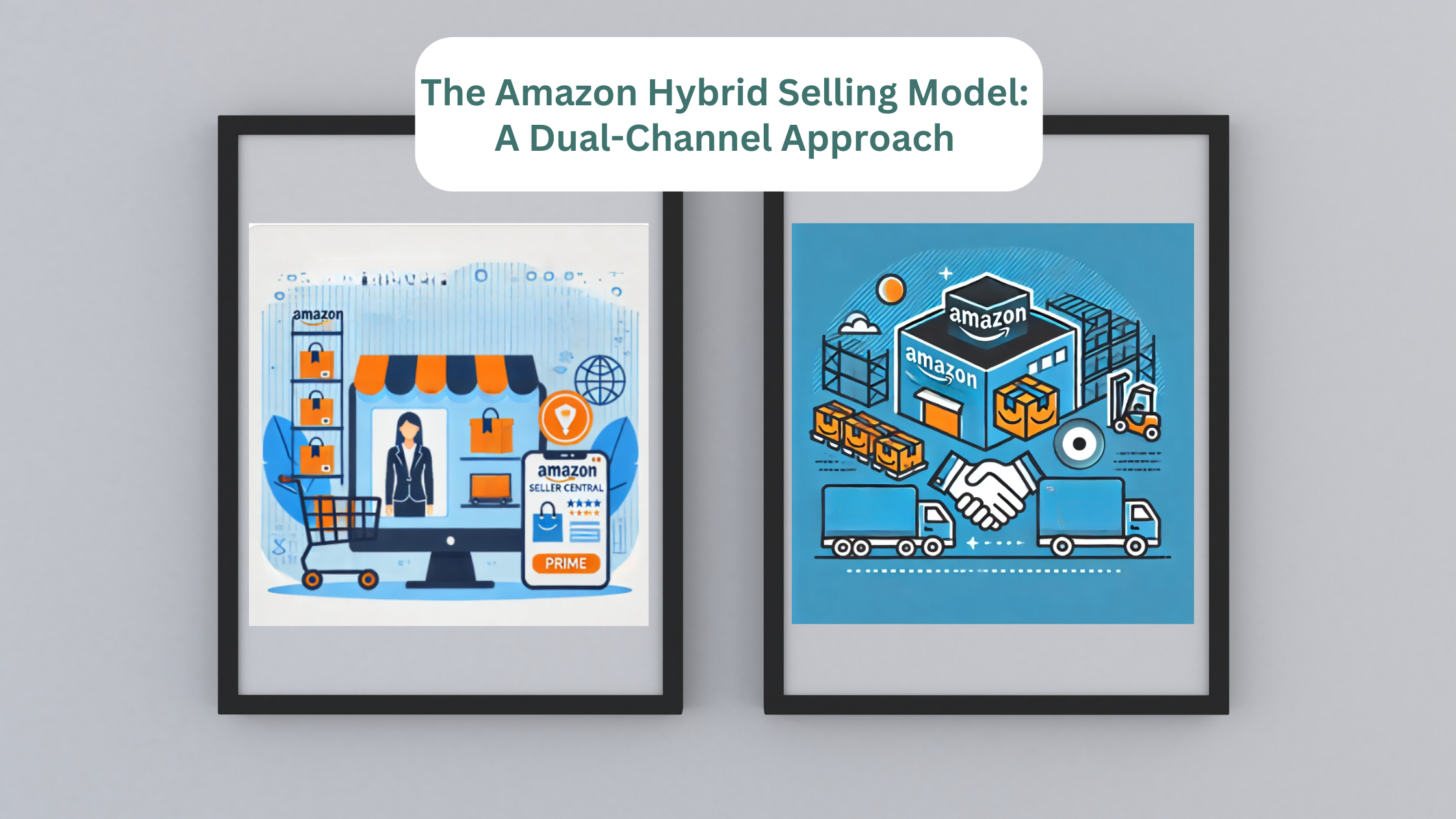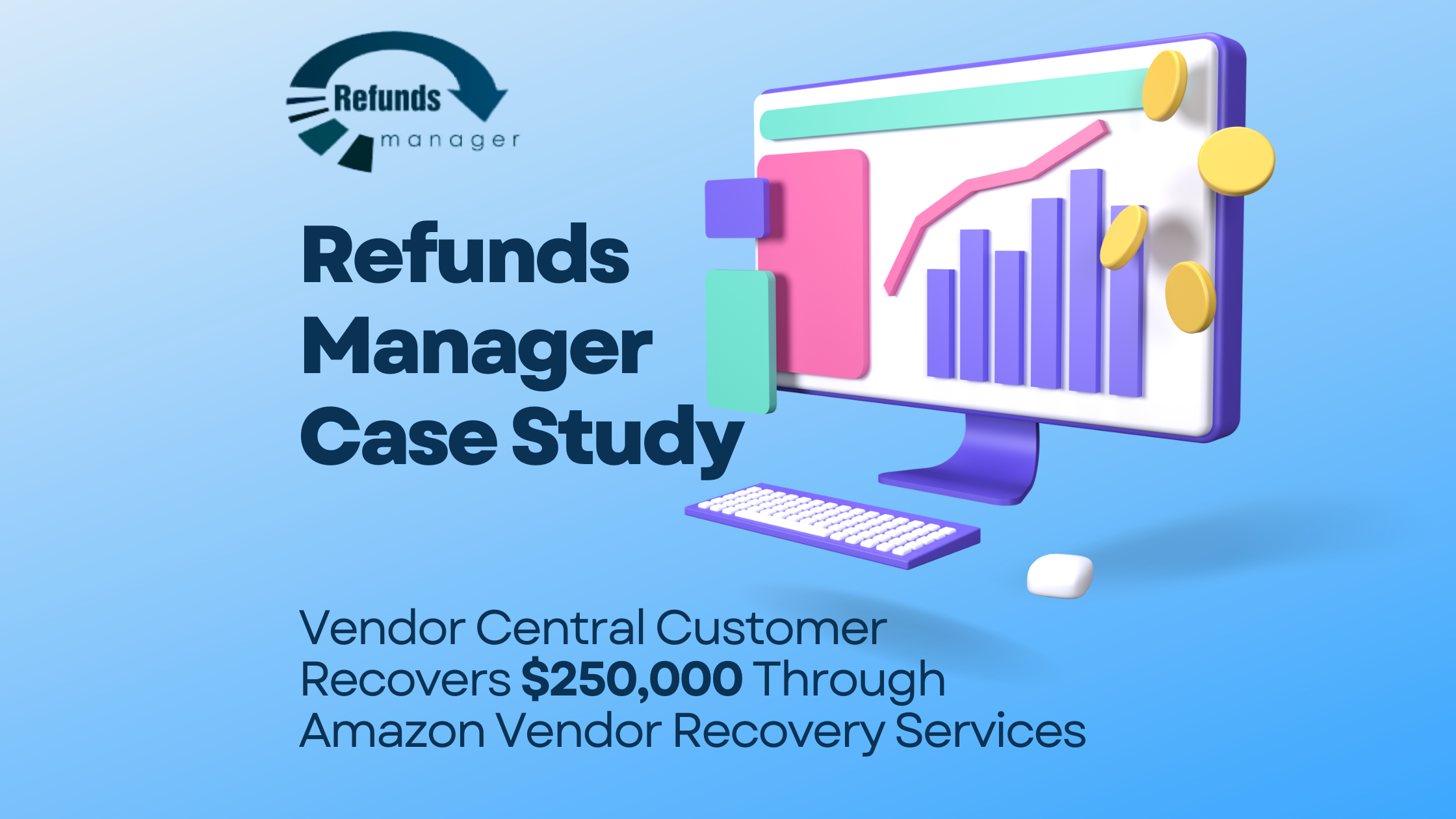Amazon vendors are facing increased complexity and competition as they work to maintain profitability. With tighter margins and more aggressive annual negotiations impacting their bottom line, many vendors are rethinking their approach to working with Amazon. One of the most effective solutions to these challenges has been the adoption of hybrid sales models. But what exactly does this strategy entail, and how can it help vendors build a more profitable business?
Table of Contents
ToggleUnderstanding the Hybrid Sales Model
A hybrid sales model combines the traditional vendor relationship (Vendor Central) with a presence on Amazon’s third-party marketplace (Seller Central). This approach allows brands to leverage the benefits of both the 1P and 3P ecosystems, thereby reducing dependency on Amazon as a sole buyer and opening up more strategic control over sales channels. While vendors typically rely on Amazon to buy their products wholesale and resell them, adding a 3P Seller Central account means you can also sell products directly to consumers on the platform, maintaining greater control over pricing, stock levels, and marketing strategies.
This dual strategy is becoming increasingly popular among vendors looking to navigate the evolving Amazon landscape and mitigate risks tied to relying solely on Amazon’s buying terms and pricing constraints. Let’s break down the key benefits of a hybrid sales model:
1. Greater Pricing Control
One of the primary reasons vendors choose to establish a hybrid sales model is to gain more control over pricing. As a 1P vendor, Amazon sets the prices of your products, which often leads to inconsistencies with pricing strategies across different sales channels. This can result in unexpected discounts, price suppression, or even Buy Box suppression if Amazon’s algorithms detect lower prices on other platforms.
By selling products through a 3P Seller Central account, vendors can set their own prices and manage discounts, allowing for more cohesive pricing strategies that align with other retail partners. This also provides a safety net when Amazon’s aggressive pricing strategies threaten profit margins.
2. Reduced Margin Pressure
Margin pressure is one of the biggest pain points for vendors on Amazon. Annual negotiations often result in higher fees, increased advertising commitments, and reduced profitability. Operating a Seller Central account can serve as a counterbalance to these pressures, as it enables vendors to create a direct-to-consumer (DTC) sales channel without being subjected to the same margin-cutting tactics.
By balancing wholesale distribution through Vendor Central and DTC sales through Seller Central, vendors can achieve healthier overall margins and avoid being squeezed by Amazon’s buying team during negotiations.
3. Inventory and Stock Flexibility
Inventory management is another critical area where the hybrid model shines. Amazon’s automated ordering system for 1P vendors often leads to overstock or understock situations, resulting in increased storage fees or lost sales. A hybrid model gives vendors the flexibility to allocate inventory more strategically between their 1P and 3P channels, reducing the risk of stockouts and maintaining availability during peak periods.
Additionally, having a Seller Central account enables vendors to fulfill orders directly, either through Fulfillment by Amazon (FBA) or their own logistics networks, which can further reduce dependency on Amazon’s purchasing patterns.
4. Enhanced Brand Protection and Control
Operating as a hybrid vendor also offers better protection for your brand on Amazon. Vendor Central listings are often at risk of being altered by unauthorized sellers or impacted by pricing errors. As a 3P seller, vendors have more control over product listings, brand registry tools, and enhanced brand content, ensuring that product information remains accurate and consistent.
Moreover, the hybrid model allows vendors to maintain a presence in the Buy Box when their 1P stock is depleted or when the 1P listings are at risk of suppression due to pricing discrepancies.
5. Opportunity for Testing New Products
Introducing new products to Amazon can be challenging under a traditional 1P model. Amazon may not immediately recognize the value of a new product or could underbuy, leading to insufficient stock and slower sales momentum. With a 3P account, vendors can test new products in the marketplace without relying on Amazon to place large initial orders. This approach allows vendors to build sales history and consumer demand before transitioning successful products to 1P listings.
6. Improved Negotiation Leverage
Finally, having a hybrid model can strengthen your negotiation position with Amazon. If Amazon knows you have the ability to sell directly to consumers, it may be less inclined to push for aggressive terms during annual trade negotiations. This additional leverage can result in more favorable pricing and lower fees for 1P orders, ultimately improving profitability.
Potential Challenges of a Hybrid Model
While a hybrid sales model offers many benefits, it’s not without challenges. Managing both Vendor Central and Seller Central accounts requires more resources, and brands must be prepared to handle the operational complexities that come with running parallel sales channels. Vendors also need to ensure compliance with Amazon’s policies to avoid complications that could impact their standing on either platform.
Additionally, setting up a Seller Central account may require a different strategy when it comes to marketing, customer service, and logistics. Investing in these areas is crucial to ensure the success of the hybrid approach.
Is the Hybrid Sales Model Right for Your Brand?
Transitioning to a hybrid model is a strategic decision that requires careful planning and resource allocation. It’s not suitable for every vendor, but for those facing significant margin pressure or wanting more control over their Amazon presence, it’s an approach worth considering. Brands that have successfully adopted hybrid models often report improved profitability, greater pricing control, and enhanced brand presence on Amazon.
If you’re looking to explore how a hybrid model could benefit your business, consider starting with a select range of products on Seller Central to test the waters. Evaluate performance and adjust your strategy as needed to maximize the potential of this dual-channel approach.
As Amazon’s business model continues to evolve, it’s essential for vendors to adapt their strategies to maintain control and profitability. The hybrid sales model—combining the strengths of both Vendor Central and Seller Central—offers vendors more flexibility and leverage in managing product availability, pricing, and margins.
If you’re an Amazon vendor looking to optimize your financial outcomes and streamline your processes, Refunds Manager can help. Our team specializes in recovering lost funds and handling the complexities of chargebacks and deductions. Reach out today to see how we can support your business in maximizing profitability and minimizing losses. Visit RefundsManager.com for more information.




